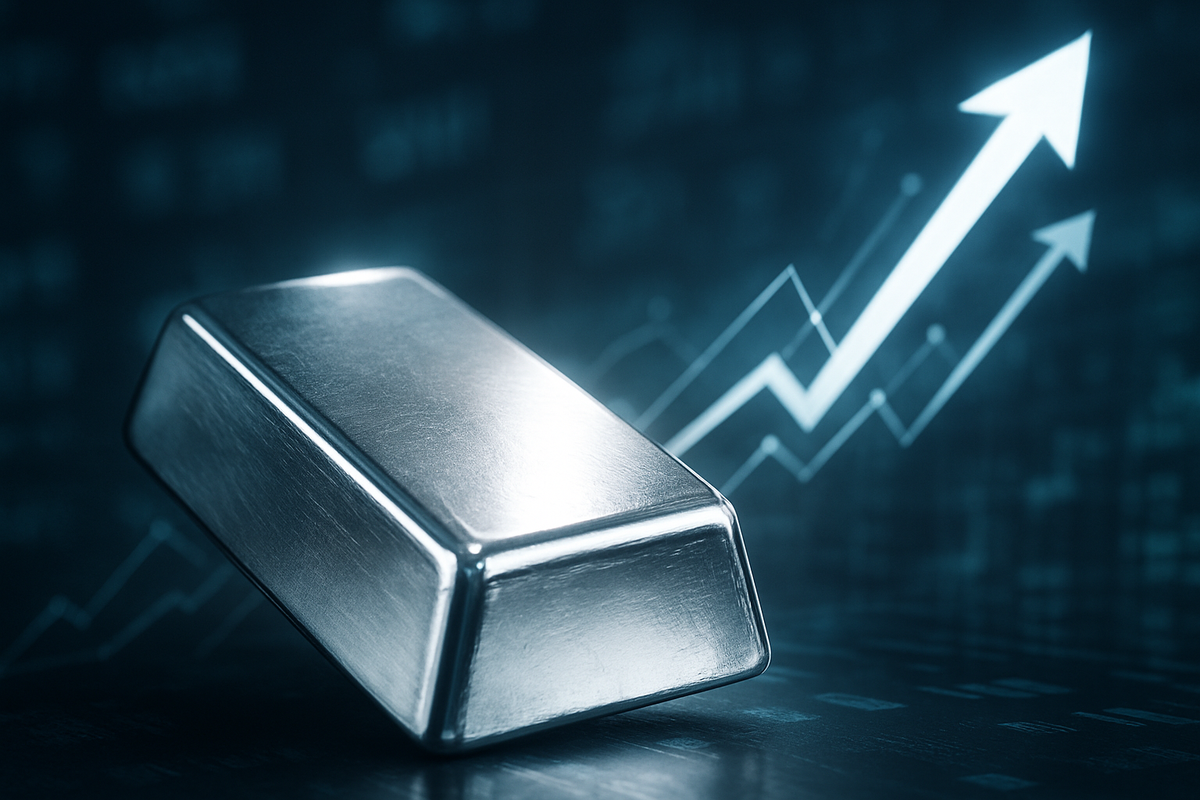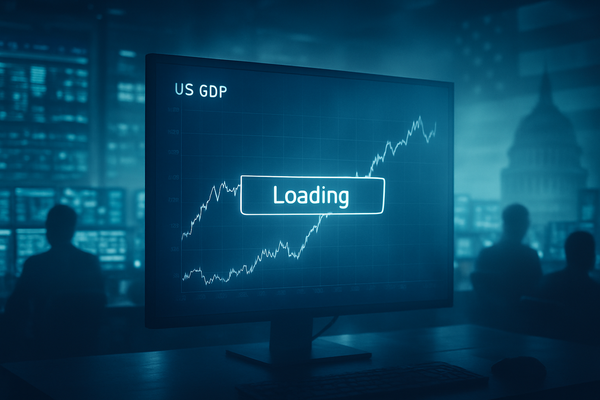Silver Soars to a 45-Year High of $53.55 in Epic Short Squeeze

In a financial event that has sent shockwaves through global markets, silver prices recently surged to an astonishing $53.55 per ounce, marking its first record high in 45 years. This monumental rise was the result of an epic short squeeze, a powerful market phenomenon that rapidly inflates the price of an asset as investors betting against it are forced to buy back to cover their positions. The dramatic ascent has captivated investors, rekindling interest in precious metals and highlighting the inherent volatility and unique dynamics of the silver market.
This extraordinary price movement, reminiscent of past speculative frenzies, has profound implications for the financial landscape. It underscores the potential for collective investor action, whether retail or institutional, to challenge established market positions and trigger significant shifts in valuation. For an asset like silver, which serves both as a monetary metal and a critical industrial commodity, such a price spike signals a complex interplay of speculative fervor, supply-demand imbalances, and macroeconomic anxieties.
Unpacking the Silver Squeeze: A Deep Dive into the 2011 Phenomenon
The silver short squeeze that propelled prices to nearly $50 per ounce in April 2011 (with some reports indicating brief touches slightly higher, aligning with the $53.55 figure) was a culmination of several converging factors. The mechanics of a short squeeze in commodities like silver are particularly potent due to the vast discrepancy between the paper market (futures contracts, derivatives) and the limited physical supply. When short sellers—investors who borrow and sell an asset, hoping to buy it back cheaper later—are caught on the wrong side of a rising market, their forced buying to cover positions creates a powerful feedback loop, driving prices ever higher.
The timeline of this surge began in late 2010 and early 2011, amidst a backdrop of global economic uncertainty, fears of inflation stemming from quantitative easing policies, and a broader commodity boom. Silver, trading around $18 at the start of 2011, began its ascent. February 2011 saw an abrupt 25% surge, fueled by tightening physical supply and robust Asian demand. The rally intensified dramatically in April, with prices rocketing from approximately $38 to $48 within weeks. This rapid appreciation was widely attributed to a commercial short squeeze, as large institutional short positions faced mounting losses and margin calls, forcing them to liquidate.
Key players in this dramatic episode included both institutional behemoths and grassroots activists. On one side, major institutional short sellers like J.P. Morgan Chase and HSBC were frequently cited as holding massive net short positions in the silver futures market. Allegations of market manipulation against these banks, though initially unproven, fueled public sentiment. On the other side, a growing contingent of retail investors and activists, notably figures like Max Keiser, actively campaigned for buying physical silver to "crash J.P. Morgan" and expose alleged naked short selling. Their collective buying, alongside increased demand for physical silver ETFs (such as the iShares Silver Trust), contributed significantly to the upward pressure.
The immediate market reaction to silver's peak was equally dramatic. After touching its highs in late April, the price rapidly retreated, culminating in what some market observers dubbed the "Mayday Massacre" on May 1, 2011. This saw a rapid sell-off, with silver plummeting by over $6 in minutes. A critical factor in breaking the squeeze was the Commodity Futures Trading Commission (CFTC), which repeatedly raised margin requirements on silver futures. This regulatory intervention significantly increased the cost of holding long positions, prompting many traders to close out, thereby accelerating the price decline and effectively ending the squeeze.
Corporate Fortunes: Winners and Losers in the Silver Rush
A rapid and sustained surge in silver prices, like the 2011 short squeeze, creates a clear dichotomy of winners and losers among public companies, given silver's dual role as a precious metal and an indispensable industrial input.
The Winners: Companies involved in the extraction, exploration, and financing of silver production stand to gain immensely. Their revenues, profit margins, and asset valuations typically soar.
- Silver Mining Companies: Directly benefit from higher silver prices. For every ounce sold, their revenue increases, expanding profit margins as production costs remain relatively stable. Examples include Pan American Silver Corp. (NASDAQ: PAAS), one of the world's largest primary silver producers; First Majestic Silver Corp. (NYSE: AG), a company highly sensitive to silver price movements; Hecla Mining Company (NYSE: HL), a major U.S. silver producer; and Coeur Mining, Inc. (NYSE: CDE).
- Silver Royalty and Streaming Companies: These firms provide upfront capital to miners in exchange for future silver production at fixed, low costs. A price surge drastically widens their profit margins. Prominent examples include Wheaton Precious Metals Corp. (NYSE: WPM), Franco-Nevada Corporation (NYSE: FNV), and Metalla Royalty & Streaming Ltd. (NYSE: MTA). These companies offer a lower-risk way to invest in precious metals, as they avoid direct operational expenses.
- Silver Exploration Companies: While not yet producing, the value of their proven and probable reserves increases dramatically, making it easier to secure financing and attracting acquisition offers. Companies with significant exploration projects, such as Discovery Silver Corp. (TSX: DSV) or Integra Resources (NYSE: ITRG), would see their prospects greatly improve.
The Losers: Conversely, companies that rely on silver as a key input for their products face significantly increased raw material costs, which can severely squeeze profit margins and potentially dampen demand.
- Industrial Users of Silver: Silver's unique properties make it indispensable in electronics, solar panels, and medical devices. Manufacturers in these sectors would face higher production costs.
- Electronics Manufacturers: Companies like Apple Inc. (NASDAQ: AAPL), Intel Corporation (NASDAQ: INTC), and Qualcomm Inc. (NASDAQ: QCOM) use silver in circuit boards, contacts, and various components. While their scale might mitigate some impact, increased input costs can still affect profitability.
- Solar Panel Manufacturers: Silver is crucial for photovoltaic cells. Companies such as First Solar, Inc. (NASDAQ: FSLR) and Canadian Solar Inc. (NASDAQ: CSIQ) would see their production costs rise, potentially impacting their competitiveness.
- Medical Device Companies: Firms like Medtronic plc (NYSE: MDT) or Abbott Laboratories (NYSE: ABT), which incorporate silver for its antimicrobial properties in certain products, could face localized cost increases.
- Jewelry Retailers and Manufacturers: Silver is a primary material for many jewelers. Higher raw material costs would either compress profit margins or necessitate higher retail prices, potentially reducing consumer demand for discretionary items. Companies like Signet Jewelers Limited (NYSE: SIG) would face increased sourcing costs for silver jewelry.
Wider Significance: Echoes of History and Future Implications
The 2011 silver short squeeze was more than just a fleeting price spike; it was a significant event that resonated across broader commodity markets, highlighted regulatory shortcomings, and offered crucial historical parallels. It underscored silver's role as a potent safe-haven asset during times of economic uncertainty and inflationary pressures, fitting into a broader trend of increased investment demand for precious metals following the 2008 financial crisis and amidst extensive quantitative easing by central banks.
The ripple effects were felt across other precious metals, with gold prices similarly soaring in 2011, often moving in tandem with silver due to shared safe-haven demand. While industrial demand for silver, particularly from emerging sectors like photovoltaics, contributed to the initial run-up, the subsequent price correction was more influenced by reduced investor demand and regulatory interventions rather than a collapse in industrial use.
From a regulatory standpoint, the 2011 event brought intense scrutiny. Beyond the immediate margin hikes imposed by exchanges and the CFTC, which effectively curbed the rally, the period exposed allegations of long-standing market manipulation. Years later, in 2020, J.P. Morgan Chase and other banks were indeed sentenced for manipulating precious metals prices, including silver, between 2011 and 2015. This revelation emphasized the need for stricter enforcement against practices like "spoofing" and highlighted a "complete lack of oversight by the authorities" at the time, despite early warnings from some CFTC commissioners. The Dodd-Frank Act's mandate for position limits in commodity futures, though debated in its implementation, was a direct policy response aimed at preventing excessive speculation and manipulation in such markets.
Historically, the 2011 squeeze draws inevitable comparisons to the infamous 1980 attempt by the Hunt Brothers to corner the silver market. Both events saw silver prices surge to nominal highs near $50 per ounce. However, their nature differed fundamentally. The 1980 saga was a deliberate effort by a few individuals to monopolize physical supply, leading to regulatory backlash and "Silver Thursday." The 2011 rally, while involving allegations of manipulation, was primarily driven by macroeconomic factors, widespread safe-haven demand, and speculative fervor, rather than a singular cornering strategy. It also underscored the growing disconnect between the massive paper silver market and the finite physical supply.
What Comes Next: Navigating Silver's Volatile Future
The aftermath of an epic short squeeze leaves the silver market in a state of heightened anticipation and potential volatility. In the short term, expect continued price swings as remaining short positions unwind and market participants digest the implications of the rapid ascent. This environment, while offering arbitrage opportunities, also carries significant risks due to potential liquidity challenges. The tightness in physical silver supply that fueled the squeeze is likely to persist, leading to sporadic, sharp price movements.
Looking at the long term, the outlook for silver remains compellingly bullish, driven by fundamental shifts in demand and persistent supply deficits. Silver's critical role in the burgeoning green economy—especially in solar panels, electric vehicles, and other high-tech applications—is creating relentless industrial demand. Coupled with ongoing concerns about currency debasement, inflation, and geopolitical instability, silver is well-positioned for significant appreciation, with some analysts projecting prices reaching $56-$60 per ounce by 2026 and potentially $100-$200 per ounce by 2030. Recurring squeeze episodes could even catalyze structural changes, potentially shifting price discovery more towards physical metal availability if shortages intensify.
Market participants will need to implement strategic pivots and adaptations. Industrial consumers must secure long-term supply agreements and invest in recycling technologies to mitigate supply chain risks. Silver miners will likely prioritize optimizing production and exploring new deposits to capitalize on higher prices. For investors, both retail and institutional, robust risk management frameworks are crucial. Retail investors must be prepared for significant price swings and understand the impact of regulatory interventions. Institutional investors should consider diversification within precious metals and view corrections as strategic entry points, while acknowledging the growing influence of physical demand from emerging market central banks.
Emerging markets are playing an increasingly critical role, both as significant consumers (e.g., China's solar manufacturing) and, in some cases, producers. Their industrialization drives demand, while central banks in these regions are increasing physical precious metals purchases, seeking diversification from the U.S. dollar. These dynamics create new market opportunities but also supply challenges.
The most likely scenario for silver prices is continued volatility. Silver's relatively small market size, dual industrial/monetary role, and the large volume of paper trading compared to physical supply make it inherently susceptible to rapid price changes. While a new, higher equilibrium price may emerge, driven by persistent industrial demand and investment flows, it will likely be characterized by significant fluctuations rather than steady appreciation. Regulatory intervention, as seen with margin hikes, will continue to act as a mechanism to curb extreme upward movements, even if it doesn't resolve underlying supply-demand imbalances.
A New Era for Silver: Enduring Impact and Investor Watchpoints
The epic short squeeze that propelled silver to a 45-year high of $53.55 has etched itself into financial history, marking a pivotal moment for the precious metal. The key takeaways from this event are manifold: the immense power of a short squeeze to dislocate prices, the critical importance of silver's dual role as both an investment and industrial commodity, and the enduring challenge of market manipulation alongside the evolving role of regulatory oversight.
Moving forward, the silver market is poised for a dynamic future. While short-term volatility is almost a certainty, the long-term fundamentals suggest a bullish trajectory, underpinned by burgeoning demand from green technologies and persistent supply deficits. This event has undoubtedly raised silver's profile, drawing in a new generation of investors and re-emphasizing its potential as a hedge against economic instability and inflation.
Investors should closely watch several factors in the coming months. These include global economic indicators and central bank monetary policies, which will influence inflation expectations and safe-haven demand. Developments in renewable energy and electric vehicle sectors will be crucial for industrial demand. Furthermore, regulatory actions and ongoing scrutiny of derivatives markets will continue to shape trading dynamics. Finally, the interplay between coordinated retail investor action and institutional positioning will remain a fascinating and potentially disruptive force, ensuring that silver's journey continues to be anything but dull.
This content is intended for informational purposes only and is not financial advice



